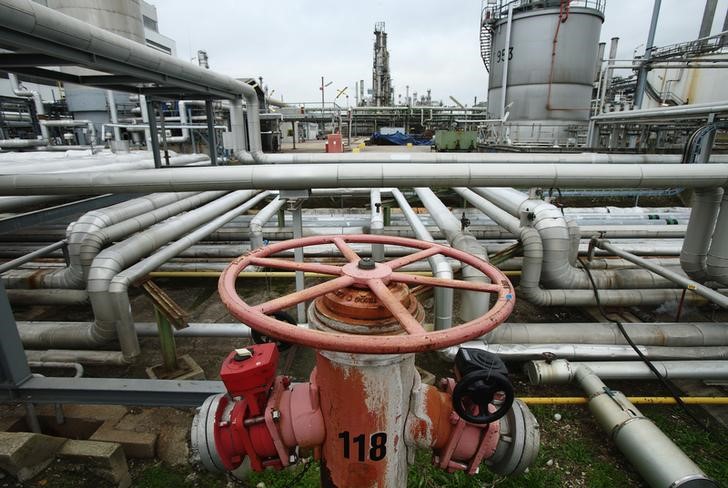Investing.com - Crude oil prices drifted lower in Asia on Thursday with investors taking profits after overnight gains in the U.S.
On the New York Mercantile Exchange, WTI crude for June delivery fell 0.66% to $43.89 a barrel.
Overnight, crude futures surged to fresh yearly highs on Wednesday, staging a dramatic comeback in U.S. morning trading, as domestic production slumped to an 18-month low and a smaller than expected inventory build last week eased ongoing concerns related to the excessive supply glut on global energy markets.
On the Intercontinental Exchange (ICE), Brent crude for June delivery wavered between $42.82 and $45.88 a barrel, before closing at $45.76 , up 1.73 or 3.95% on the session. At session-highs, North Sea brent futures came percentage point away from hitting 2016-yearly highs of $44.94 from last week.
Crude futures pared earlier losses on Wednesday morning, after the U.S. Energy Information Administration (EIA) said U.S. commercial crude oil inventories increased by 2.1 million barrels for the week ending on April 15. It came one day after the American Petroleum Institute said U.S. crude stockpiles rose by 3.1 million barrels last week. Analysts expected the Energy Department to report a build of 2.4 million barrels. At the Cushing Oil Hub in Oklahoma, stockpiles fell by 248,000 barrels, defying expectations for a draw around 1 million barrels. Inventory levels at Cushing, the main delivery point for NYMEX oil, still remain close to full storage capacity.
At 538.6 million barrels, U.S. crude oil inventories are at historically high levels for this time of year. Distillate fuel inventories fell sharply by 3.6 million barrels on the week, while total motor gasoline inventories inched down by 0.1 million barrels.
U.S. crude production, meanwhile, fell by 24,000 bpd to 8.953 million barrels per day, retreating to fresh 18-month lows. It marked the 12th time domestic crude output has decreased in the last 13 weeks. Last June, U.S. production hovered near 9.6 million bpd, its highest level in more than 40 years.
Earlier, crude sunk to session-lows after workers in Kuwait ended a three-day strike that slashed the OPEC producer's daily output by nearly half. Soon after, Reuters reported that Kuwait upped its production to 1.6 million bpd, from Sunday's level of 1.1 million. The strike commenced after the completion of failed negotiations over the weekend in Qatar, when 18 OPEC and Non-OPEC members were unable to reach a deal on a comprehensive production freeze.
Elsewhere, investors largely shrugged off comments from Alexander Novak, in which the Russian energy minister cast doubts on the possibility of a subsequent meeting between OPEC and Non-OPEC producers next month in Russia. Consequently, Novak is not confident that the major producers can strike a deal to freeze output at January levels.
